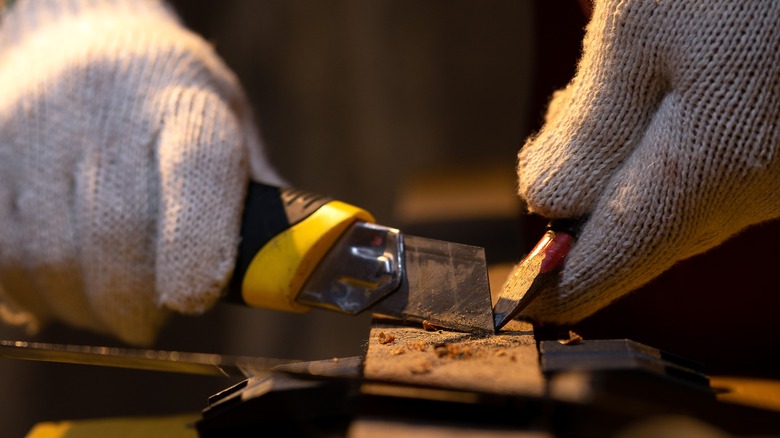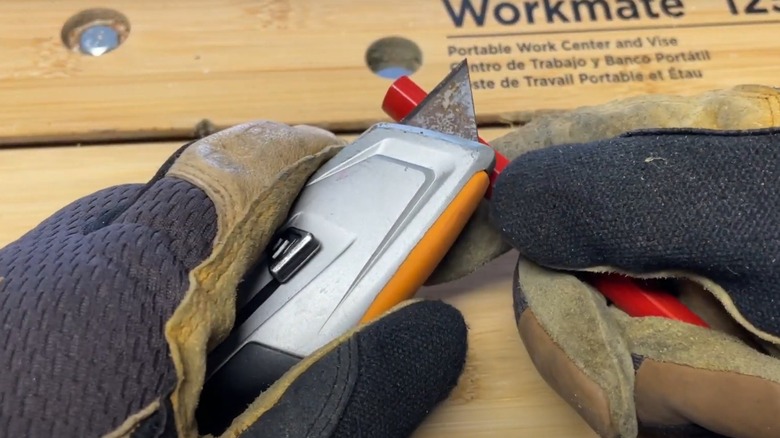Avoid This Common Mistake When Sharpening A Carpenter's Pencil
When you are planning a weekend DIY renovation project, you probably are excited to focus on things like paint colors and buying the right tools to have on hand. However, the success of your project may come down to something far more mundane: taking and marking proper measurements. Having a carpenter's pencil on hand is the right tool for many DIY jobs, as its rectangular design is easy to hold while wearing gloves, and the rectangular-shaped graphite works well when marking wood. Another smart use for a carpenter pencil is to make quick measurements, thanks to its shape that measures 0.5 inches in width and 0.25 inches in depth.
Because of its shape, though, sharpening it can be difficult. It doesn't fit in a common sharpener, although you can purchase sharpeners made specifically for the rectangular shape. However, people are far more likely to use a pocket knife or utility knife to sharpen the carpenter's pencil because they may already have a knife nearby on the jobsite, making it handy.
When using a knife, though, many people make a common mistake — not keeping the knife sharp enough to make a clean cut. Any utility knife that has a sharp blade should go through the wood in the carpenter pencil cleanly and easily. To replace the blade in most utility knives, use a screwdriver to open the handle. Put a fresh blade in the position of the old blade and replace the screw in the handle. Discard the old blade safely.
How to avoid making other mistakes when sharpening a carpenter's pencil
Once you have a sharp blade in your utility knife, you're ready to begin sharpening the carpenter's pencil. Some people fail to create a proper shape in the graphite, though. Try to make a wedge shape in the lead, rather than a sharp point. When using the pencil to try and mark accurate measurements with your tape measure, the wedge shape makes it easier to be precise. You want to try to avoid making a tight point like you would with a typical pencil in a sharpener. A sharp point goes dull faster than the wedge shape. Lead with a sharp point is more likely to snap off, too, requiring another round of sharpening.
Another common mistake occurs during the whittling process of removing the pencil's wood. Start with the narrow sides of the rectangular shape, rather than the wide sides. Don't go back and forth on either side of the pencil with alternating strokes, either. Start on one side until you expose the graphite. Then work on the other side to expose the graphite before working on making the graphite into the desired wedge shape.
One final mistake people make when sharpening a carpenter's pencil involves safety. Always carve the wood away from your body. Keep the sharp edge of the knife outward and pointing away from you, rather than going toward you, to reduce the risk of a cutting injury.

